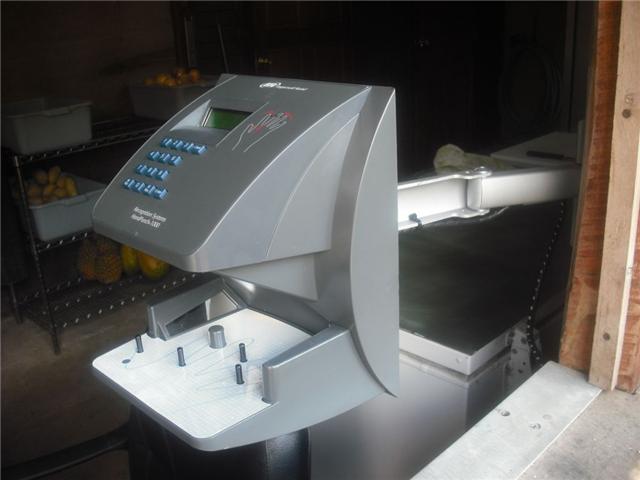Biometric time and attendance systems - images and history
Biometric readers, the physics behind it.
Fingerprint readers first arrived in the US in 1996. They were unreliable, but 20 years later, they work well in most clean enviromnents. They capture about 98% of the punches when used in offices. The limitations are this: Clean, healthy fingers do fine. If a finger has: Lint, dust, dirt, grime, grease, is callused or cut, then this would not be a fit for you. Recommended for offices, medical facilities, day care centers, schools/universities, and the like. Not recommended for manufacturing, landscaping, mechanical repair shops.
Why fingerprint readers fail: They are looking for small differences from the ridges of your fingers. Within that, they are only able to find 26 or so points to compare with the other fingerprints on record. With such a small amount of information, it is common for one person to punch in for another. Also, if a finger is leathery (been gardening this past weekend, working on the car, moving, shoveling snow?) it will have a hard time recognizing the finger. That's why the better ones come with keypads. The keypad becomes a back-up when an employees finger cannot be consistently read. So in away, the unreliable car comes with a good spare.
Facial recognition or Face ID were developed by the US government's DARPA project for ultimate security - airports were in mind after 9/11. Consumer versions arrived from China late 2010. Facial recognition technology is in its infancy. There is a personal-experience every time you look at the device, and it looks at you... You see your face in the display. They work fine for most environments. Expect the Chinese to flood the markets with this time clock solution. There are few downsides to this technology - none that we know of. It is "the next thing". You cannot beat, you cannot buddy-punch, on a facial recognition terminal. Just can't happen.
Hand Punch Readers work perfectly nearly all of the time. RSI HandPunch has been available since 1978 or so. President Jimmy Carter offered a 50 year patent to the company that invented an unbeatable access control system for nuclear power plants. RSI did it. The biometric handpunch reader scans your hand, matches it to three prior handpunch images stored in memory - it is constantly updating - then decides if it is you, or not you. By using 6 pulsing lasers and a cluster of carefully aligned and calibrated mirrors, the handpuncher reads 18,000 points of reference from the TOP of your hand. Fingeprint reader is 24 to 28. HandPunch is 18,000. That is a huge difference, it's always accurate.
For now, the most accepted hardware is the Ingersol Rand/Recognition Systems HandPunch reader(s). If you have questions, we can answer them. If we don't know the answer, we know people who do. Call us today. We stock the handpunch readers - Handpunch1000, Handpunch 1000E, and most fingerprint and facial recognition systems.
We are one of the very few companies that can quickly and correctly repair hand punch clocks. We guarantee our work for six months.




Handpunch Fingerprint reader/thumb punch Facial Recognition Hybrid Facial Recognition with Photo Match